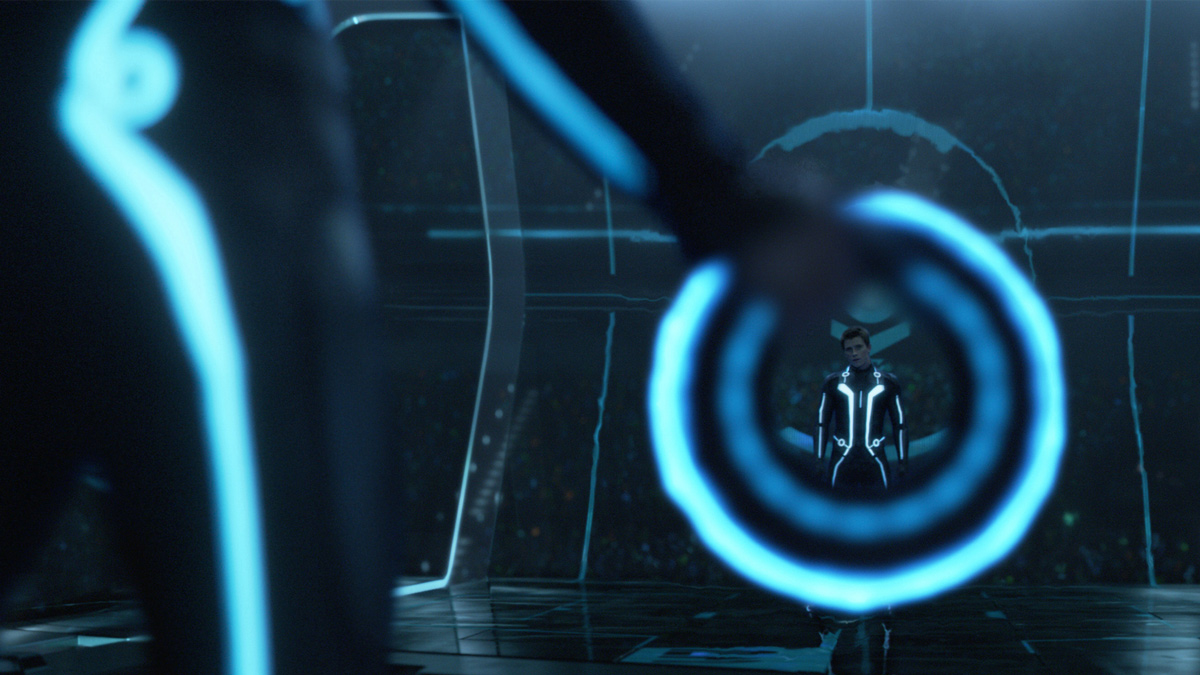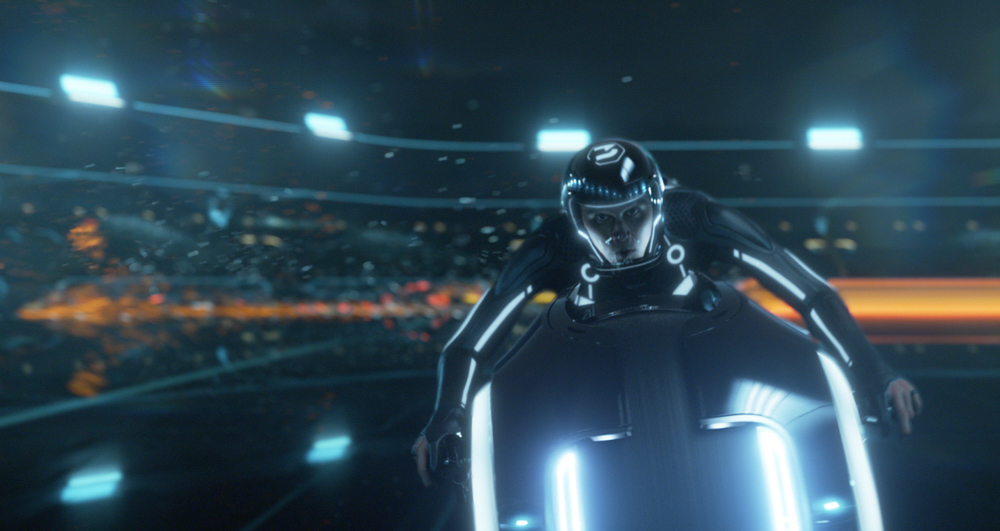
(c) Photofest / Getty Images
"TRON: Legacy" Joseph Kosinski's directorial debut, with a focus on CG, design, and new technology Part 2 *Note! Contains spoilers.
2022.07.25
Filming and screening system
Director Kosinski was also particular about the screening environment at the theater. This movie is a digital cinema shot with a Sony CineAlta F35, but in consideration of the IMAX 3D (*2) screening, the aspect ratio changes from 2.39:1 to 1.90:1 or 1.78:1 depending on the scene. Director Christopher Nolan tried something similar with `` The Dark Knight '' (2008), but he stuck to shooting with 70mm 15-perforation IMAX film.
However, director Kosinski used CineAlta F65 for `` Oblivion '' and `` Only the Brave '' (2017), CineAlta Venice IMAX (digital cinema camera certified by IMAX) for `` Top Gun: Maverick '' (22), and `` Spiderhead ''. ” (22) seems to be very fond of CineAlta Venice and Sony cameras.
We are also very particular about the acoustics, with heavy bass reminiscent of the old Sens Round , and Daft Punk (*3) songs resounding through the air.
“TRON: Legacy” Daft Punk PV
By the way, at the time this film was released, it was said that ``3D movies cannot be viewed stereoscopically properly unless they are pan-focused (deep focus), which focuses from the foreground to the background.'' This is based on the theory by the 19th century physiologist and physicist Hermann von Helmholtz that ``humans first recognize the shape of objects and then compare their outlines to obtain three-dimensional information.'' However, in 1959, the Hungarian scientist Bela Jures proved that stereoscopic vision was possible even without clear outlines or shapes, and the principles of stereoscopic vision in the human brain became chaotic. This caused confusion among photographers, who were divided into two groups: those who needed to use pan focus and those who had no problem with shallow focus, which had a shallow depth of field.
However, the CineAlta F35 used in "TRON: Legacy" has an image sensor that is the same size as Super 35 standard film, so it has a wider image circle and can shoot clear, shallow-focus images. I had. This was welcomed by many cinematographers who had been bothered by video-look digital cinema cameras that had too deep a depth of field. For TRON: Legacy, we took on the challenge of using a bold shallow focus, but there were no problems with stereoscopic viewing, and we were able to create a cine-look screen without the typical odor of 3D or digital cinema.

"TRON: Legacy" (c)Photofest / Getty Images
*2 As a side note, the author participated in the production of an IMAX SOLIDO (dome-shaped 3D video) work for the Fujitsu Pavilion with IMAX founder Roman Kreuter and others for EXPO90 held in Osaka. For this reason, I have long loved 3D images and have always kept my ears open for developments overseas, but around 2004, American movie makers started thinking, ``We want to start a digital 3D trend.'' I had a hunch that something was being planned. So, I asked the editorial departments of various magazines to let me write articles, but they did not believe me. I had no choice but to start a website (currently closed) and promote this theory. South Korea responded to this, and in 2007 he was asked to give a lecture at a related symposium at the Busan International Film Festival. Eventually, many 3D movies began to be shown in Japan, and as the release of Avatar (2009) approached, I was asked to give lectures at various symposiums, academic conferences, companies, etc. almost every week. became. One of those companies was Walt Disney Japan, and as a result of that, I was asked to supervise terminology for TRON: Legacy.
*3 They themselves appear as DJs at the End of Line Club.
After the series
Disney was making various plans to turn Tron into a franchise. First, the fully CG animated television series `` Tron: Rising '' was produced with the participation of Japan's Polygon Pictures and others. Additionally, the TRON: Legacy Lightcycle Power Run theme park attraction based on Tron: Legacy opened at Shanghai Disneyland in 2016 and will open at Walt Disney World Resort in Florida in 2022. .
The scenario for the third movie, TRON 3, is also being developed with the aim of being released around 2025. The project is being directed by Mary Magdalene director Garth Davis, but Kosinski has denied it will happen. Kosinski was actually working on the third film, TRON: Ascension, but Disney's focus on Marvel and the Star Wars series put the script on hold.
reference:
https://www.thewrap.com/tron-3-sequel-marvel-star-wars-disney-kosinski/
Text: Takayuki Oguchi
In 1982, he became the director of Japan's first CG production, JCGL. After working as the head designer for the IMAX Dome 3D video "Universe 2 ~Sound of the Sun~" at the Fujitsu Pavilion at EXPO'90, he became a freelance video creator. Won an Emmy Award for the NHK special ``Life: A 4 Billion Year Distant Journey'' (1994). He is also a video journalist specializing in VFX, CG, 3D movies, art animation, exhibition videos, etc., and has contributed numerous articles to film magazines, theater pamphlets, the web, etc. In addition to being a visiting professor at Digital Hollywood University, he is also a part-time lecturer at Waseda University's Faculty of Science and Technology, Joshibi University of Art and Design, Tokyo University of the Arts Graduate School of Animation, and Japan Electronics College.
(c) Photofest / Getty Images

